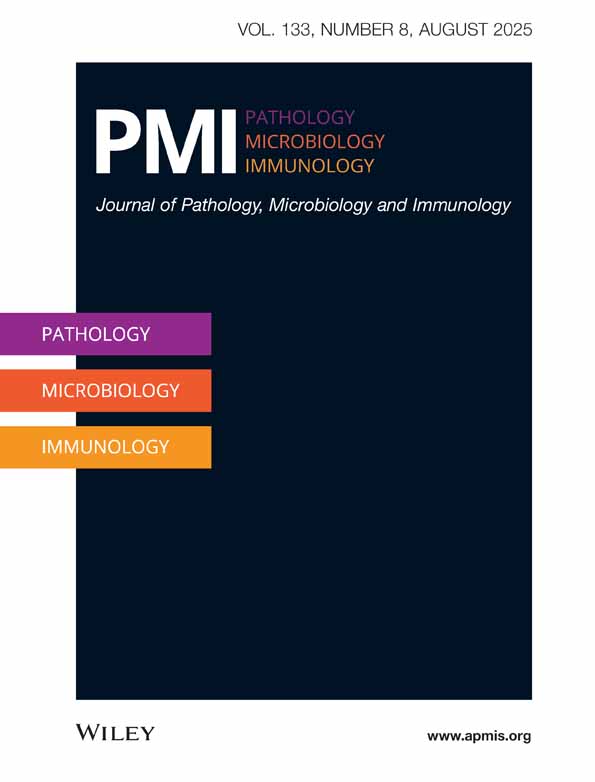Gross and histopathological findings in synovial membranes of pigs with experimentally induced Mycoplasma hyosynoviae arthritis
Abstract
The aim of this investigation was to describe the gross and histopathological findings in synovial membranes of pigs with experimentally induced Mycoplasma hyosynoviae arthritis and in synovial membranes of non-infected pigs of the same age. Experimental intravenous or intranasal inoculation or contact exposure with M. hyosynoviae induced arthritis in 13-to 17-week-old pigs. The acute to subacute arthritis was characterized by increased amounts of serohaemorrhagic, serofibrinous or mahogany coloured synovial fluid combined with edema and hyperaemia, followed by yellow to brownish discoloration and moderate villous proliferation of the synovial membrane. In the chronic phase moderate fibrosis was seen, but no periarticular or articular cartilage involvement. The acute to subacute histopathological characteristics were edema, hyperaemia, variable hyperplasia of synovial lining cells, increased density of subsynovial cell populations, diffuse and perivascular infiltration with lymphocytes, plasma cells and macrophage-like cells, fibrinous material, mild to moderate villous hypertrophy and mild to moderate fibrosis in chronic cases. The morphogenetic changes during the course of the infection may be described as follows: An acute preimmune phase with inflammatory changes and synovial membrane reactions dominates the first week of the infection. By the second and third week, the peak of the immune phase with masses of plasma cells and lymphocytes is seen. By 7 weeks, there is healing with moderate fibrosis. Mild ongoing reactions or recurrence of arthritis, perhaps related to persistence of mycoplasma antigens, may be seen in later phases and local antibody production may be important in this infection.




